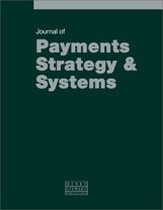The role of digital assets in global payments
Abstract
This paper examines the role of digital ledger technologies (DLT) and their underlying digital assets in the arena of global payments, arguing that digital assets can make such payments faster, less expensive and more efficient. The paper begins by describing the state of cross-border transactions today, highlighting the often piecemeal development of systems that have led to today’s network of walled gardens corresponding to national borders and currencies. It also discusses DLT solutions that are being tested to overcome these limitations. However, this technology alone cannot overcome liquidity issues in local markets — especially emerging markets. Presently, banks and payment providers resolve these issues by prefunding accounts in local currencies on both sides of a transaction, using something called nostro accounts. This is where digital assets can deliver a clear advantage when used in combination with DLT. Acting as a bridge currency, digital assets can create the necessary pools of liquidity and enable direct transactions. The future of cross-border payments will then be realised through the combination of DLT and digital assets. In this way, banks and payment providers can quickly and easily complete affordable, transparent, real-time transactions. This promise is already being tested by early adopters, and is projected to grow exponentially throughout 2018.
The full article is available to subscribers to the journal.
Author's Biography
Marcus Treacher is SVP of Customer Success at Ripple. Marcus has over 30 years of experience in transaction banking and payment technology, including global leadership roles at HSBC and SWIFT. Marcus also works with industry communities, organisations and governments to help shape new payment practices. He is the former chair of SWIFT’s global advisory body for corporates and now chairs the CHAPS Security Committee & User Group.
